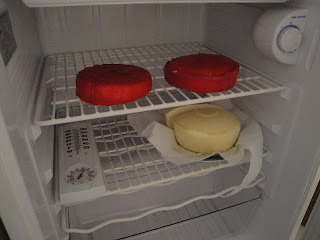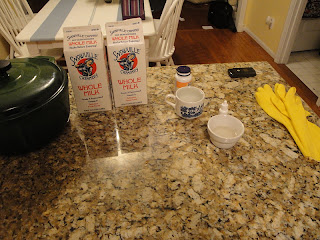Before I get to the review, take a look at this beautiful caprese salad that my wife arranged from some of my fresh mozzarella. It was a really good salad and I was very happy with the mozzarella. I made it to take to a party at a friends house and I made it very quickly will little guidance from a recipe. I guess I have made mozzarella enough times now to know how to make it. One nice thing is that it turned out almost as good as when I used the Snowville dairy milk. Not sure what made it turn out good. I did have to open a new bottle of rennett since I used up all of my first bottle. The salad is made up of tomatoes, mozzarella, basil, olive oil, salt, pepper, and some homemade balsamic syrup my wife made.
This is the 2nd book on cheesemaking I have read. I will do a review on the first at a later date. First I will tell you what I liked about the book, then what I thought could be better. Keep in mind I am writing this from the perspective as a relatively new cheesemaker.
I really like the color pictures in the book. It showed some nice pictures and had some nice stories of small operation cheesemakers. Also at the end of the book it had some very good information regarding how to cut different shapes of cheese and how to have a balanced cheese board. By making sure to put different types of textures, flavors, and milk on the board. All in all I would recommend this book to people who want to learn more about cheese and how to eat it. A good book for those who plan on buying the cheese at the store and then bringing it home and having a cheese tasting.
Now some of the things I did not like. The recipes were really lacking for a "home" cheesemaker. A lot of the recipes called for 5 gallons of milk. This can be hard unless you have a big enough pot. Even if you have a big enough pot (I do) I would not want to commit 5 gallons of milk to a cheese I had never made before. The book goes into a lot of detail on calculations on how much culture to use and how long after you get the right PH number before you should get a clean break. They also required some more advance equipment like a PH tester. While this book might be good for a commercial cheesemaker I would not recommend it for someone who is new or even intermediate in the cheesemaking field.
So if you are looking for a book to help you appreciate cheese then this might be your book but if you are looking for some guidance in your new found hobby I would not recommend this book.






















